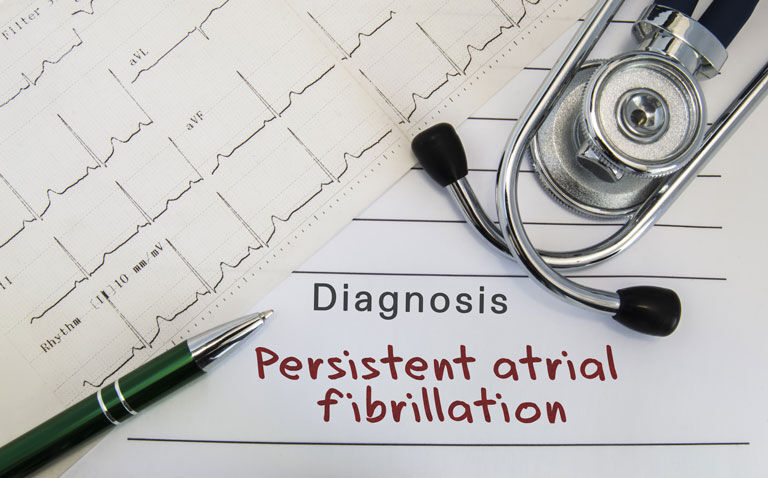An AI-guided screening device applied to an ECG could potentially identify patients at high risk of atrial fibrillation compared to usual care.
The worldwide prevalence of atrial fibrillation (AF) was estimated to be 37,574 million cases (0.51% of worldwide population) in 2017 and the authors noted how this has increased by 33% during the last 20 years. However, AF is often asymptomatic and a US-based study estimated that of a total AF prevalence of 5.3 million (in 2009), 0.7 million (13.1% of AF cases) were undiagnosed.
Moreover, AF is a major risk factor for strokes and it has been estimated that around 20% of all strokes are caused by the arrhythmia, highlighting the need to identify those affected.
AF can be detected with an ECG although patients require intermittent and prolonged monitoring which is labour intensive. In a 2019 study, it was found that an AI-guided screening tool enabled an ECG, acquired during normal sinus rhythm, to identify individuals with atrial fibrillation.
Nevertheless, while this important advance was potentially of great clinical value, prior to widespread implementation, there were two further and important questions. Firstly, could the AI-guided screening tool enable risk-stratification that was superior to currently available approaches and secondly, how often or how much monitoring would be required for those deemed to be at a high-risk for AF using the device.
In trying to answer these questions, a team of US researchers, undertook a non-randomised, interventional trial and prospectively recruited patients who had risk factors for a stroke but without AF and who had an ECG.
The AI-guided screening tool using just the raw ECG data, determined an individual’s AF risk score which was categorised as either high or low-risk. Eligible participants wore a continuous ambulatory heart rhythm monitor all the time for 30 days and were matched 1:1 to real-world control patients (i.e., a group not wearing the monitor).
The primary outcome of interest was newly diagnosed atrial fibrillation, defined as an episode lasting 30 seconds or longer.
AI-guided screening tool and detection of atrial fibrillation
A total of 1,003 individuals with a mean age of 74 years (61.8% male) were included in the study, of whom 370 were deemed to be at a low AI assessed risk of AF.
Over a mean of 22.3 days, AF was detected in 1.6% of those deemed to be at low risk and 7.6% deemed to be at high risk (odds ratio, OR = 4.98, 95% CI 2.11 – 11.75, p = 0.0002).
The researchers calculated that AI-guided screening was associated with a significantly higher detection of AF compared to usual care in those deemed at high risk (10.6% vs 3.6%, p < 0.0001). However, the difference was not significant for those deemed at low risk (2.6% vs 1.1%, p = 0.12).
The authors concluded that the AI-guided screening tool was able to risk-stratify patients for AF in the short-term and to provide a higher rate of detection among patients deemed to be at high risk.
Citation
Noseworthy PA et al. Artificial intelligence-guided screening for atrial fibrillation using electrocardiogram during sinus rhythm: a prospective non-randomised interventional trial Lancet 2022.










